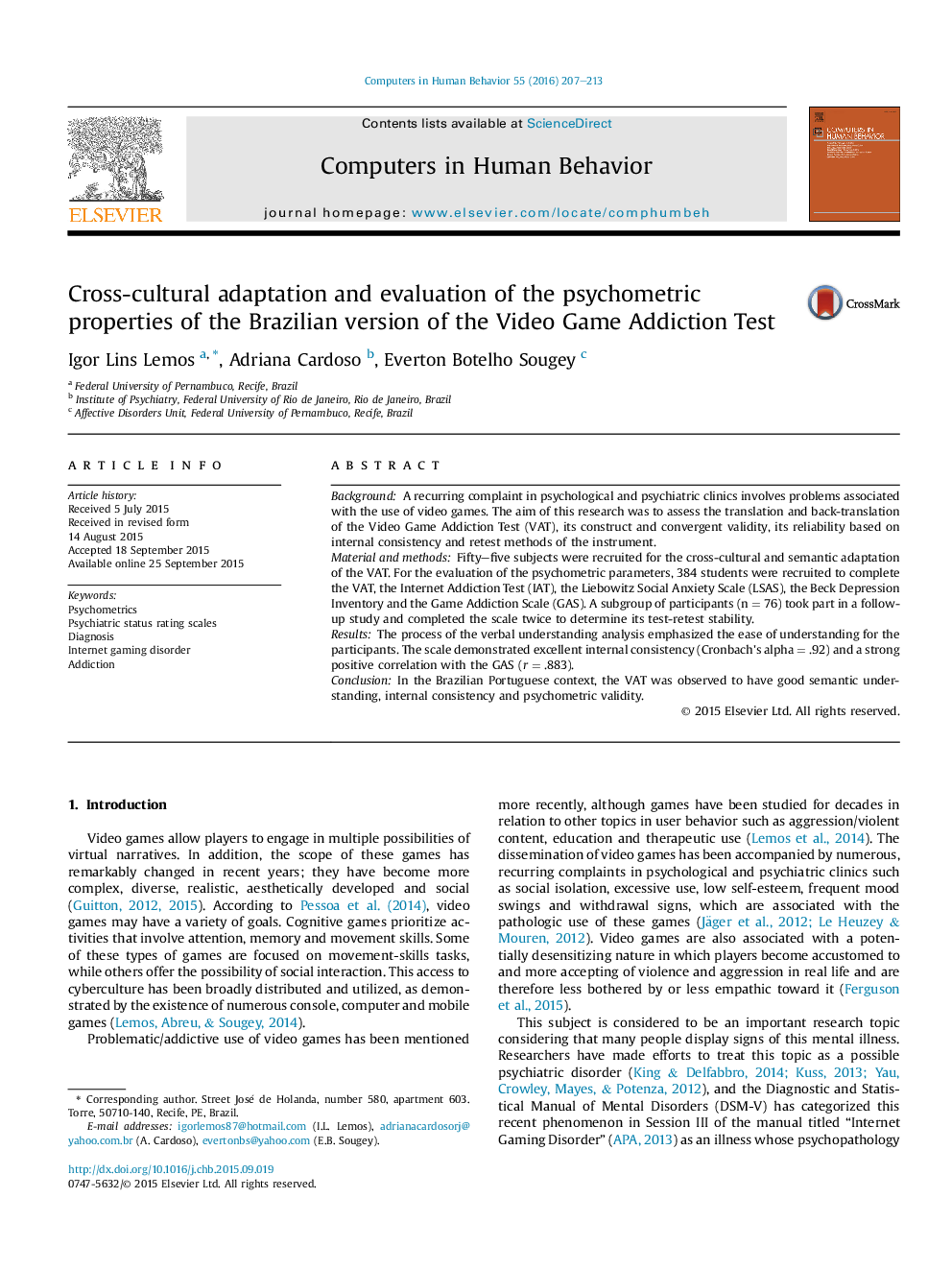| کد مقاله | کد نشریه | سال انتشار | مقاله انگلیسی | نسخه تمام متن |
|---|---|---|---|---|
| 350166 | 618432 | 2016 | 7 صفحه PDF | دانلود رایگان |
• The Video Game Addiction Test (VAT) consists of 14 items divided into five criteria.
• The semantic understanding of the items in Brazilian Portuguese was excellent.
• The scale had good results for internal consistency and temporal stability.
• The instrument can be used in the assessment of video game addiction.
BackgroundA recurring complaint in psychological and psychiatric clinics involves problems associated with the use of video games. The aim of this research was to assess the translation and back-translation of the Video Game Addiction Test (VAT), its construct and convergent validity, its reliability based on internal consistency and retest methods of the instrument.Material and methodsFifty–five subjects were recruited for the cross-cultural and semantic adaptation of the VAT. For the evaluation of the psychometric parameters, 384 students were recruited to complete the VAT, the Internet Addiction Test (IAT), the Liebowitz Social Anxiety Scale (LSAS), the Beck Depression Inventory and the Game Addiction Scale (GAS). A subgroup of participants (n = 76) took part in a follow-up study and completed the scale twice to determine its test-retest stability.ResultsThe process of the verbal understanding analysis emphasized the ease of understanding for the participants. The scale demonstrated excellent internal consistency (Cronbach's alpha = .92) and a strong positive correlation with the GAS (r = .883).ConclusionIn the Brazilian Portuguese context, the VAT was observed to have good semantic understanding, internal consistency and psychometric validity.
Journal: Computers in Human Behavior - Volume 55, Part A, February 2016, Pages 207–213
